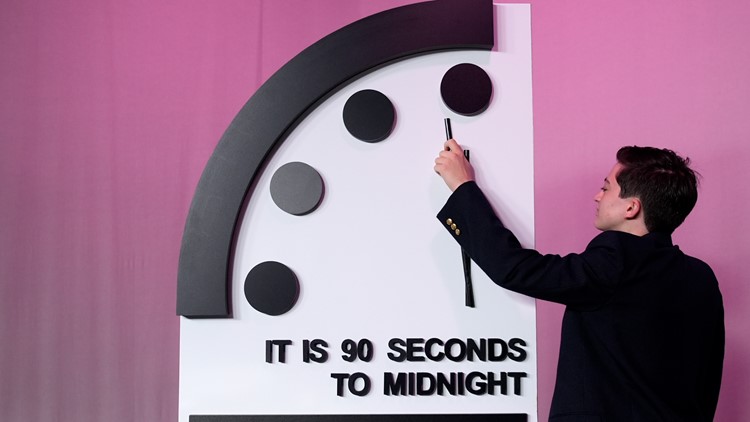WASHINGTON — The Bulletin of the Atomic Scientists announced Tuesday that its famous Doomsday Clock remains at ninety seconds, the closest its ever been to striking midnight.
The panel said that current trends continue to point to "global catastrophe," as of January 2024.
"The war in Ukraine poses an ever-present risk of nuclear escalation, and the October 7th attack in Israel and war in Gaza provides further illustration of the horrors of modern war, even without nuclear escalation," Rachel Bronson, president and chief executive of The Bulletin of the Atomic Scientists, said in a statement.
The Doomsday Clock, a symbolic countdown to human extinction established in 1947, remains at 90 seconds to midnight for the second year in a row as the panel updates a decades-old international symbol meant to illustrate the threat of global apocalypse.
In a statement, the panel said, "The war in Ukraine and the widespread and growing reliance on nuclear weapons increase the risk of nuclear escalation. China, Russia, and the United States are all spending huge sums to expand or modernize their nuclear arsenals, adding to the ever-present danger of nuclear war through mistake or miscalculation.
The panel, founded in 1945 by Albert Einstein, J. Robert Oppenheimer, and University of Chicago scientists who helped develop the first atomic weapons in the Manhattan Project, attempts to educate people on potentially world-ending dangers.
On Tuesday, the panel of international scientists pinpointed nuclear escalation, the lack of action on the climate crisis, the dangers of generative artificial intelligence, and evolving biological threats as the primary areas for global catastrophe.
"Many weapon states are currently pursuing extensive modernization and expansion programs. That will really, for the first time since the end of the Cold War essentially provide the infrastructure that could last until 2100," Professor Alexander Glaser of the School of Public and International Affairs and member of the panel said.
"In many ways, we're setting ourselves up for a three-way arms race, which is, unprecedented and quite, concerning. So the picture is quite bleak," he added.



